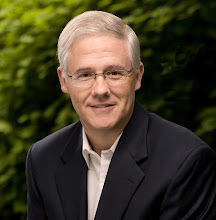
I'm sitting here struggling with how to write a critique of this highly-praised yet flawed screenplay. Besides my usual feeling of not being good enough - in spite of being highly-successful in Hollywood - what I really want to do right now is have a muffin, and I might as well have coffee too, although it might be better to exercise first.
Kaufman - the writer not the character - has been applauded for his very post-modern technique of including his own struggle to write an adaptation of "The Orchid Lover" as part of the story. If we're comparing to mainstream Hollywood genre films, yes, I will go along with that. But it's also a technique many of us used in high school when we had to write a paper for which we had no subject.
What matters is the technique's effectiveness. Does it give Kaufman a structure that allows him to tell a great story?
Like Kaufman's earlier script,
Being John Malkovich,
Adaptation has some funny scenes in the opening, and then structurally falls apart. In fact, this script is really a long opening and a long ending stuck together, with little in the middle.
I'm not arguing for a three-act structure script, or for the dreaded genre story that Kaufman considers so beneath him. But I am arguing for a story, an organic unit that builds steadily and expresses a set of themes.
Kaufman's character, Charlie, gives us the key clue to why this organic story never happens. To make this script work, he says he must connect the screenwriter's story with that of the author and the botanist. He never comes close.
Charlie, the character, clearly has needs. He is down on himself, paralyzed, way too self-conscious and is unable to show a woman how he feels about her. Susan, the author, is apparently unhappy in her marriage and wants to feel passionately about something. The botanist, though quirky, does feel passionately about orchids. But his need - to overcome the loss of his wife - has nothing to do with the hero.
The problem comes from the fact that Charlie's desire, to adapt Susan's book, doesn't connect these characters in any but the most superficial way. Whatever weaknesses Charlie may have, he is certainly passionate about good writing. His only connection to Susan and her problems occurs in the ridiculous final scenes when she tries to kill him, an action that is totally out of character and thus has no emotional meaning or payoff.
For most of the film, Charlie's only connection is with his twin brother. This character provides lots of laughs, especially for any writer who has spent any time in Hollywood. And I was certainly grateful for that.
But even here Kaufman's set-up doesn't allow an organic story to develop. The brother represents the writer's urge to go commercial, to hit the simple formula of the hack and make a lot of money. But this is set in opposition to a character who has become highly successful within Hollywood by being original. Sure, he's having some problems adapting this particular book, but that's because the book shouldn't be a movie in the first place. And if Charlie fails, it certainly won't mean the end of his lucrative Hollywood career, or even give it much of a dent.
Playing out this conflict between brothers, then, has nowhere to go. Charlie's brother is at most an inconvenience, and his success at selling his formulaic thriller should cause Charlie, the golden boy, little more than a bemused, "That's Hollywood."
The conflict between the brothers also has nothing to do with the author or the botanist. Neither is dealing with the issue of selling out. The botanist is an obsessed scientist who loves his work; the author is writing an article and book about an orchid man, and trying to match his passion.
All this explains why the story doesn't develop, and why the ending is from another movie. I'm sure that Kaufman the writer justifies the ending by figuring that when Charlie hooks up with his hack, thriller-writing brother, the story they are playing out turns into a thriller as well.
It's a gag idea, too clever by half, and only highlights Kaufman's inability to connect these characters and tell a full story. These characters do have an emotional reality that has been established for most of the film. That is immediately tossed in the toilet. Charlie, no matter how desperate, would never have asked his brother for help with this script, never have gone to see a writing teacher (I like to think he would have called me eventually), never have followed Susan to Florida, etc. etc. etc. Susan would never have tried to kill Charlie, nor would the botanist.
It's all absurd. Unfortunately it's not played absurd. It's played straight. So when the tragedy hits, it's fake tragedy, death ex machina, with the emotions painfully hollow.
As this movie played out, I started smelling the overwhelming odor of disdain that Kaufman seems to have for his audience. He figures he can do a fancy cross cut between three unrelated characters, toss in some inside Hollywood jokes, include himself as a character, staple on a big Hollywood genre ending and everyone will call him a genius.
Given the response of the critics, I guess he's right. I need a muffin. Or maybe coffee. Or maybe I'll call mom...



